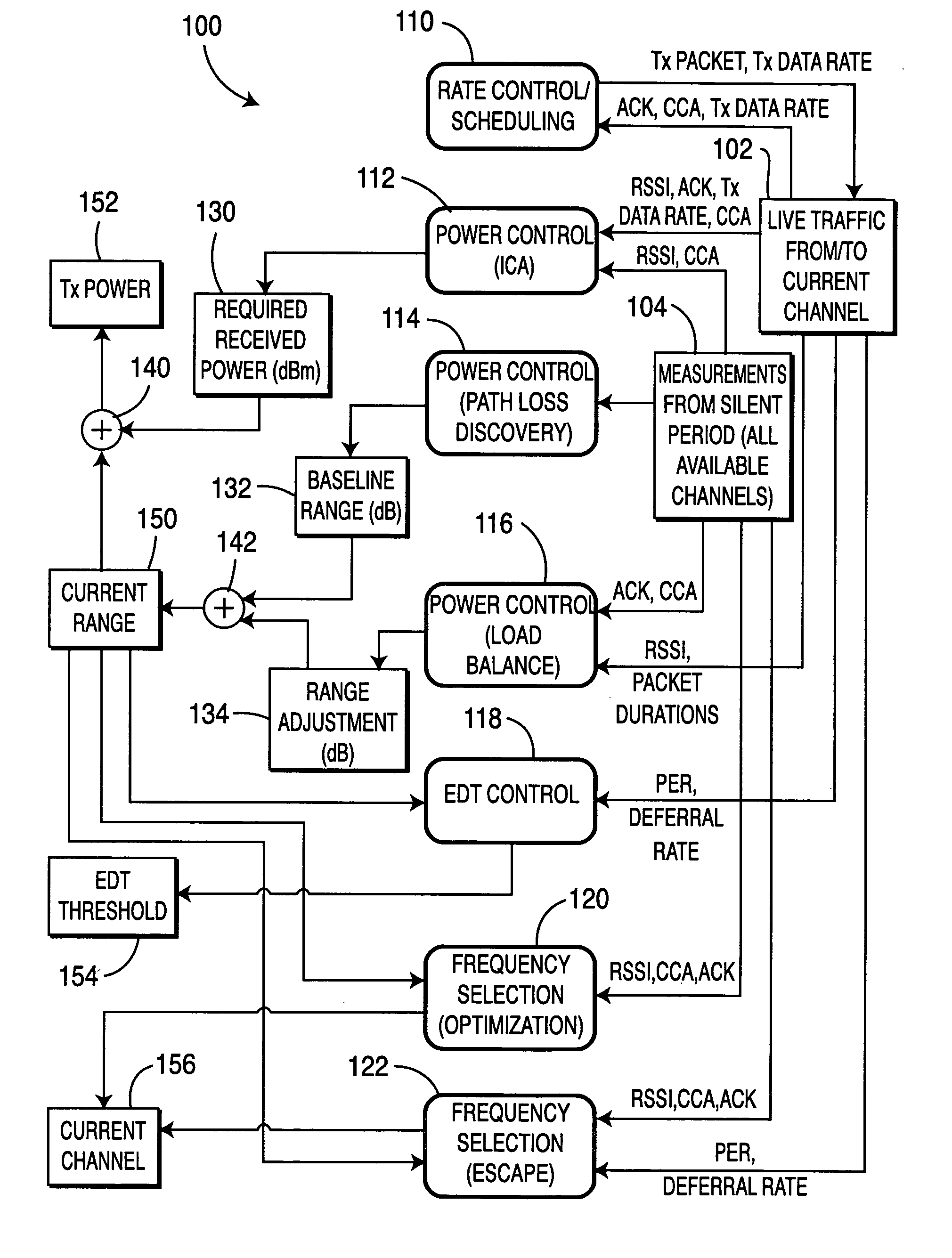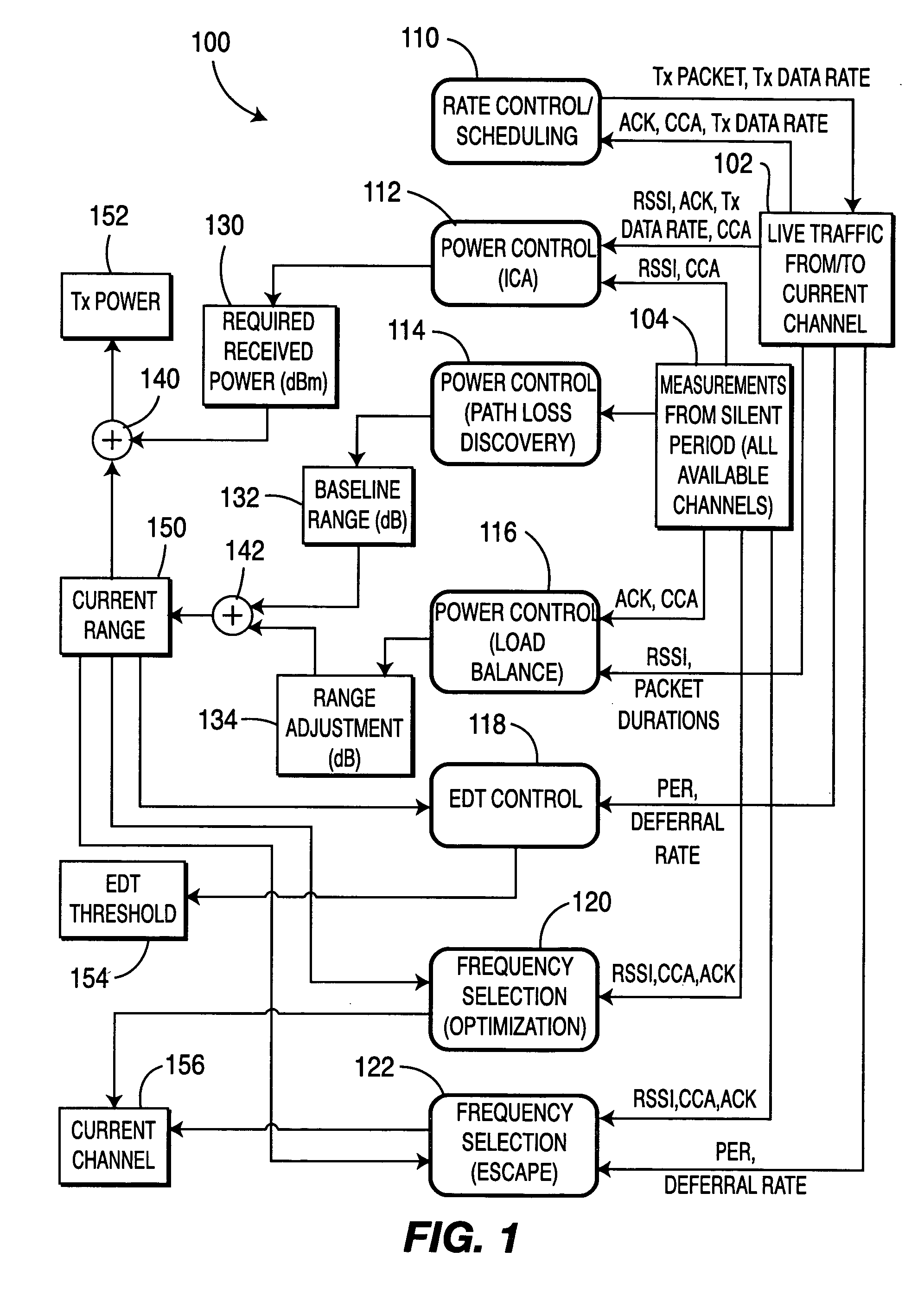Radio resource management in wireless local area networks
a technology of radio resource management and wireless local area networks, applied in power management, wireless communication, transmission, etc., can solve problems such as high unrealisticity
- Summary
- Abstract
- Description
- Claims
- Application Information
AI Technical Summary
Benefits of technology
Problems solved by technology
Method used
Image
Examples
case 1
[0050] VI. Use Case 1: Severe External Interferer
[0051] The following use case illustrates the sudden occurrence of a severe external interferer. The basic network layout is illustrated in FIG. 3, where four APs (BSS 1 through BSS 4) are setup in a 50 m×50 m building. AP 4 is placed next to a small office kitchen, where a microwave oven resides.
[0052] Certain assumptions are made on the interference generated by the microwave oven, based on empirical tests. The interference generated by the microwave oven is highest in channel 11, lower in channel 6, and very low in channel 1. Moreover, the interference is only unsupportable when located near the microwave oven (i.e., within BSS 4).
[0053] Prior to microwave usage, the system is in the following state: all BSSs are operating at a similar medium load, with high satisfaction for all served stations; all APs are transmitting at 5 dB below their maximum power setting; and all stations are transmitting at maximum power.
[0054] The initi...
case 2
[0059] VII. Use Case 2: Meeting Room Scenario
[0060] Assume that there is a four AP WLAN system covering an area of 50 m×50 m. Each AP covers approximately 25 m×25 m. The area is divided into mainly offices with one large conference room and one small conference room. Each office is either a single or dual person office. Each employee has a laptop with wireless LAN access. APs are placed more or less in each quadrant of the area as shown in FIG. 5.
[0061] The main assumptions in this scenario are that the APs are evenly balanced, each assuming one quarter of the total load, and operate initially on the channels shown in Table 3. The total load on each AP is light, with approximately 10% of the AP's available capacity being used.
TABLE 3Initial channel assignment for each APQuadrantInitial ChannelUpper left (ULQ)1Upper right (URQ)6Lower left (LLQ)11Lower right (LRQ)1
[0062] The following events and actions occur, as shown in FIG. 6. A large meeting takes place in the two conference ro...
PUM
 Login to View More
Login to View More Abstract
Description
Claims
Application Information
 Login to View More
Login to View More - R&D
- Intellectual Property
- Life Sciences
- Materials
- Tech Scout
- Unparalleled Data Quality
- Higher Quality Content
- 60% Fewer Hallucinations
Browse by: Latest US Patents, China's latest patents, Technical Efficacy Thesaurus, Application Domain, Technology Topic, Popular Technical Reports.
© 2025 PatSnap. All rights reserved.Legal|Privacy policy|Modern Slavery Act Transparency Statement|Sitemap|About US| Contact US: help@patsnap.com



